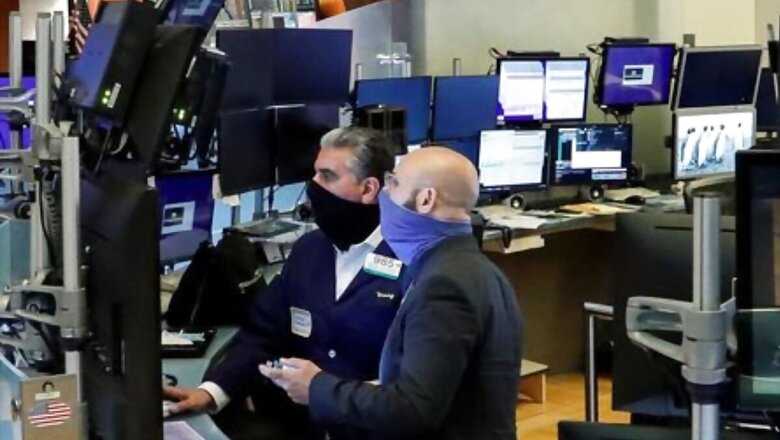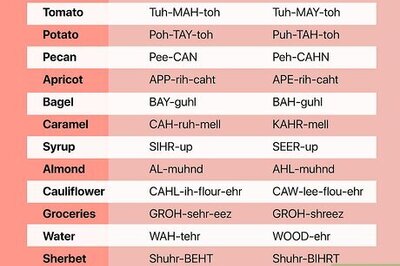
views
U.S. employers likely hired the fewest workers in five months in October, in what would be clearest indication yet that the end of fiscal stimulus and exploding new COVID-19 infections were sapping momentum from the economic recovery.
The Labor Department’s closely watched employment report on Friday will underscore the challenges the next president, whether it is incumbent Republican Donald Trump or Democrat Joe Biden, confronts to keep the economy growing as it heals from the deepest recession since the Great Depression.
Biden inched closer to victory on Thursday in an exceedingly close U.S. election, while Trump alleged fraud without providing evidence, filing lawsuits and calling for recounts in a race yet to be decided since polls closed on Tuesday.
“The October jobs report is likely to show evidence of a weakening labor market,” said Dean Baker, senior economist at the Center for Economic and Policy Research in Washington. “This is an urgent problem facing whoever will be in the White House.”
Nonfarm payrolls likely increased by 600,000 jobs in October after rising 661,000 in September, according to a Reuters survey of economists. That would be the smallest gain since the jobs recovery started in May and leave employment 10.1 million jobs below its February peak.
The employment report is also expected to show increases in the ranks of people who have permanently lost their jobs, as well as those who have been out of work for more than six months.
A contested election reduces the chances of another coronavirus rescue package from the government this year. Even if more fiscal policy is agreed on, it will likely be smaller than had been anticipated before the election.
That will shift the spotlight to the Federal Reserve.
The U.S. central bank kept interest rates near zero on Thursday. Fed Chair Jerome Powell acknowledged the pace of improvement in the economy and labor market had moderated, noting that the recovery would be stronger with more fiscal support.
More than $3 trillion in government pandemic relief for businesses and workers fueled a historic 33.1% annualized rate of economic growth in the third quarter. That followed a record 31.4% pace of contraction in the April-June quarter.
Lack of fiscal stimulus and spiraling new coronavirus infections across the country have put the economy on a sharply slower growth path heading into the fourth quarter. Restaurants and gyms have moved outdoors, but cooler weather and the resurgence in COVID-19 infections could leave many in trouble.
Even if states and local governments do not impose new restrictions on businesses, consumers are likely to stay away, fearing exposure to the respiratory illness. The United States set a one-day record for new coronavirus cases on Wednesday with at least 102,591 infections, according to a Reuters tally.
DOWNSIDE RISK
“The virus is still keeping many people from going to their local restaurants, bars and cafes, and this continues to weigh on the employment numbers for small businesses,” said Torsten Slok, chief economist at Apollo Global Management in New York.
“Given half of U.S. employment is in businesses with less than 500 workers and given the lower likelihood of additional fiscal support, this is a downside risk to nonfarm payrolls over the coming months, including tomorrow.”
Large corporations are also not immune. Exxon Mobil last month announced 1,900 layoffs in the United States. Boeing said it expected to eliminate about 30,000 jobs, 11,000 more than previously planned, by end-2021.
A below-forecast payrolls number for October cannot be ruled out. Reports on Wednesday showed hiring by private employers missed expectations by a wide margin last month and employment in the services sector industry slowed.
Data from Homebase, a payroll scheduling and tracking company, showed the number of employees working last month little changed from September.
Overall job growth in October was likely restrained by the departure of more temporary workers hired for the 2020 Census, and tight budgets at state and local governments.
Retailers normally start hiring for the holiday season in October, a practice that was upended by the pandemic. According to economists at JPMorgan, this could throw off the model the government uses to strip out seasonal fluctuations from the data and weigh on nonfarm payrolls.
The unemployment rate is forecast falling to 7.7% from 7.9% in September. That is not a true reflection of the labor market’s health as the jobless rate has been biased down by people misclassifying themselves as being “employed but absent from work.”
At least 21.5 million people were receiving unemployment benefits in mid-October. Many people, mostly women, have dropped out of the labor force to look after children or because they fear contracting the virus.
“Lingering coronavirus fear, a slowing economic recovery and reports of childcare challenges are making discouraged workers more reluctant to rejoin the official ranks of those seeking work while pushing others to leave the labor market for the time being,” said Kathy Bostjancic, chief U.S. financial economist at Oxford Economics in New York.
With labor market momentum ebbing, average hourly earnings are forecast rising 0.2% in October after gaining 0.1% in September. The average workweek is seen steady at 34.7 hours.
Read all the Latest News, Breaking News and Coronavirus News here
















Comments
0 comment